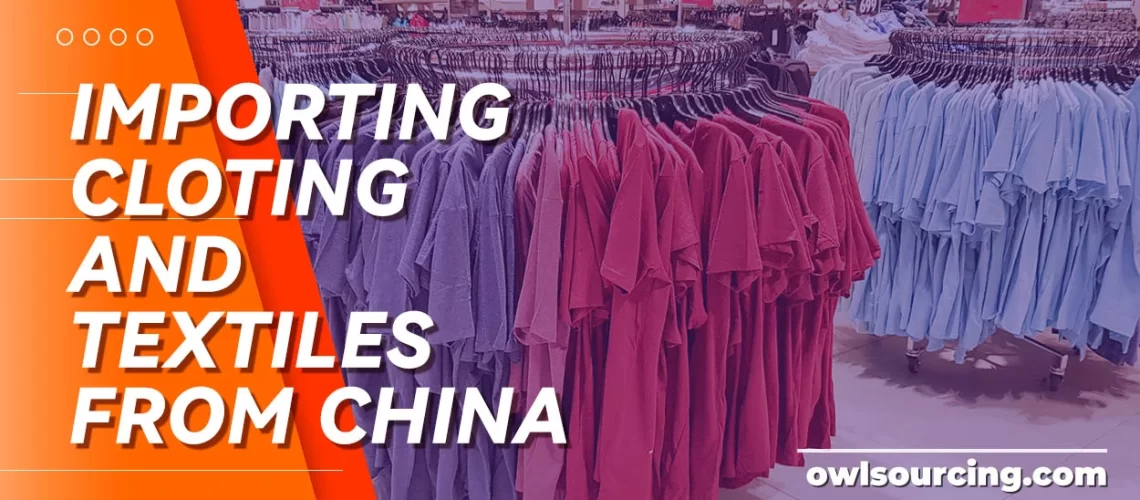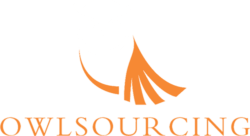Estimated reading time: 16 minutes
To be successful in the fashion industry, it’s important to find affordable ways to get the materials you need. This can be challenging because things are always changing. staying ahead of the competition means finding unique and cost-effective sourcing opportunities. In this blog article, we will explore the advantages of sourcing from China’s vibrant clothing and textile market.
We’ll consider legal considerations, strategies for finding reliable suppliers, ensuring product quality, managing shipping logistics, and effective financial management, among other aspects. Whether you’re an experienced importer or just entering the industry, this guide will provide you with the knowledge you need to successfully navigate the complex world of importing clothing from China.
Table of Contents
ToggleWhy Choose to Buy Clothing and Fabrics from China?

Due to China’s rich history and expertise in fabric production and clothing manufacturing, it has long been a center for textile manufacturing. Purchasing clothing and fabrics from China is a wise choice for several compelling reasons:
- Competitive Prices: Chinese manufacturers often offer competitive prices due to lower labor costs and economies of scale.
- Diverse Product Range: From high-end designer brands to affordable and stylish fast-fashion options, China’s clothing market caters to a wide range of consumer preferences.
- Craftsmanship: Chinese manufacturers inherit generations of craftsmanship, producing high-quality clothing that meets international standards.
- Fashion Trends and Innovation: China’s fashion industry continually pushes boundaries, embracing emerging trends and innovative designs, attracting global market attention.
Clothing and Textile Markets in China
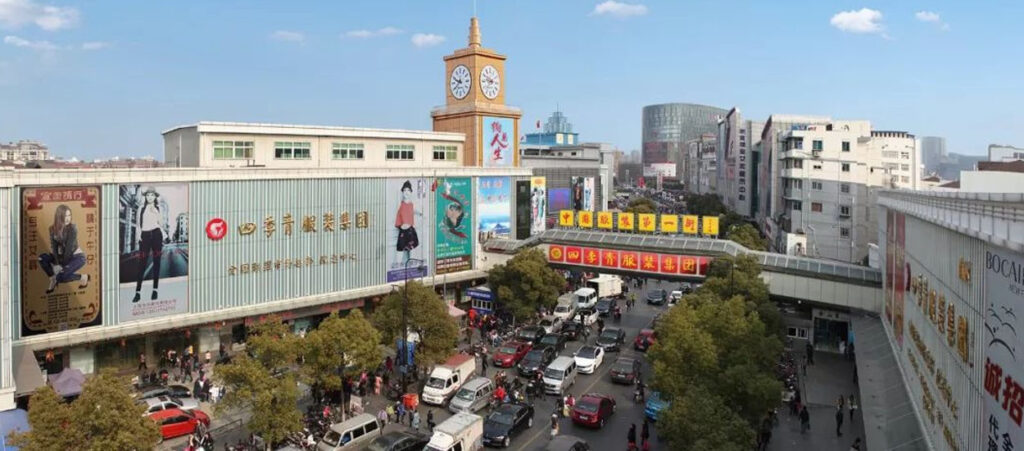
Major Cities and Fabric Wholesale Markets.
China boasts numerous cities known for their textile industry. Some notable places include:
- Keqiao Fabric Wholesale Market in Shaoxing, Zhejiang (China’s largest fabric wholesale market)
- Shanghai Fabric Market
- Guangzhou Zhongda Fabric Market (Guangzhou is also known for the Canton Fair)
- Jinyi Light Textile City in Zhengzhou
- Sijiqing Clothing Wholesale Market in Hangzhou
- Shengze Fabric Market in Jiangsu
Textile and Clothing Trade Shows in Mainland China and Hong Kong
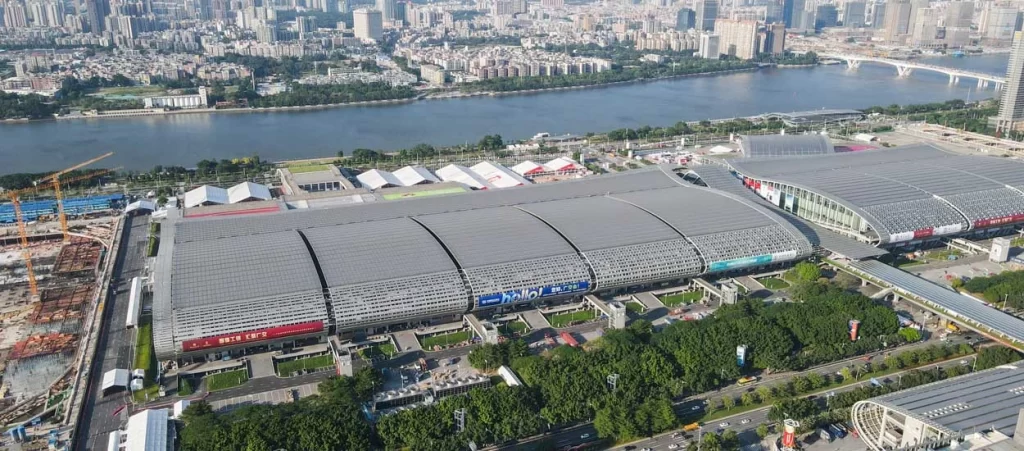
Participating in textile and clothing trade shows in China can provide valuable market insights, connect you with suppliers, and showcase the latest industry trends. One important trade show is the Canton Fair held in Guangzhou. This biannual event showcases a vast array of clothing and fabric choices and serves as an excellent platform for networking, exploring new partnerships, and gaining firsthand knowledge of China’s textile industry.
The Canton Fair has been successfully held for 133 sessions and established trade relations with more than 229 countries and regions around the world. The accumulated export volume has amounted to about USD 1.5 trillion and the total number of overseas buyers attending the Canton Fair onsite and online has exceeded 10 million.
——From: About The Canton Fair
If you want to learn more about the Canton Fair, you can also refer to our blog article
👉: Guide to Attending the 134th Oct Canton Fair 2023
Trends and Innovations in the Fashion Industry
China’s vibrant fashion industry constantly pushes boundaries and embraces new trends. From avant-garde designs to eco-friendly materials, Chinese designers and manufacturers are at the forefront of innovation. By sourcing from China, you can tap into these trends and offer unique products to your customers.
Legal and Regulatory Considerations

Before delving into importing clothing from China, understanding the legal and regulatory environment is crucial. Here are some key considerations:
1. Import Regulations and Compliance
Familiarize yourself with import regulations specific to your country or region. Ensure compliance with customs requirements, labeling standards, and product safety regulations.
2. Tariffs, Duties, and Taxes
Understand the applicable tariffs, duties, and taxes imposed on imported clothing in your target market to accurately estimate costs.
To inquire about tariff information in the United States for clothing and fabrics imported from China, please click here.
The Harmonized Tariff Schedule of the United States (HTS) sets out the tariff rates and statistical categories for all merchandise imported into the United States. The HTS is based on the international Harmonized System, which is the global system of nomenclature applied to most world trade in goods.
3. Intellectual Property Protection
Protecting intellectual property is crucial when importing branded or copyright-protected clothing items. Familiarize yourself with trademark laws in both China and your country.
4. U.S. Clothing Standards and Requirements
For the U.S. market, understand standards set by agencies like the Federal Trade Commission (FTC), including fiber content disclosure, care labels, flammability requirements, etc.
- Care and Labeling: Each garment must include care and labeling instructions, providing clear washing and care guidelines, including temperature, washing methods, and ironing requirements.
- Material and Component Labels: Garments must specify the materials’ components to ensure consumers understand the composition. These labels are typically located inside the collar or waistband.
- Size Standards: Clothing size standards should align with the U.S. sizing system, often represented as XS, S, M, L, XL, rather than specific numerical sizes.
- Flammability Performance: Certain types of clothing, such as children’s sleepwear, may need to meet flammability performance standards for safety.
- Dye and Color Fastness: Dyes used in clothing must be safe and resistant to fading. Colorfastness testing is a common requirement.
- Chemical Restrictions: Clothing must not contain harmful chemicals beyond legal limits, such as heavy metals or harmful dyes.
- Wearability and Comfort: Clothing must meet standards for comfort and wearability to ensure the wearer’s comfort.
- Country of Origin Labeling: Indicating the manufacturing country or region of clothing is mandatory for consumers to know the product’s origin.
- Tariffs and Import Taxes: Understand applicable tariffs and import taxes in the U.S. to ensure compliance and understand import costs.
- Certifications and Compliance: Some clothing may require specific certifications, such as organic certification or non-anesthetic certification, depending on the product type.
- Safety Testing: Baby and children’s clothing may require safety testing to ensure there are no small, ingestible parts or other potential hazards.
- Flammability Labels: Certain types of clothing, such as sleepwear, may need to include flammability warning labels to alert consumers to potential fire hazards.
5. European Union Clothing Standards and Requirements
For businesses targeting the European Union market, familiarize yourself with relevant EU directives covering product safety standards, chemical restrictions (REACH), labeling requirements (CE marking), and more.
- CE Certification: Many types of clothing, especially those involving baby and children’s wear, require CE certification. The CE mark signifies compliance with EU safety requirements. Ensure your clothing meets specific EU directives, such as the Children’s Product Safety Directive.
- Material and Component Labels: Clothing must specify the materials’ components to ensure consumers understand the composition. These labels are typically located inside the collar or waistband.
- Size Standards: Clothing size standards should align with the European sizing system, often represented as XS, S, M, L, and XL, rather than specific numerical sizes.
- Dye and Color Fastness: Dyes used in clothing must be safe and resistant to fading. Colorfastness testing is a common requirement.
- Chemical Restrictions: Clothing must not contain harmful chemicals beyond the limits set by EU regulations, such as those specified in the REACH regulation.
- Wearability and Comfort: Clothing must meet standards for comfort and wearability to ensure the wearer’s comfort.
- Country of Origin Labeling: Indicating the manufacturing country or region of clothing is mandatory for consumers to know the product’s origin.
- Tariffs and Import Taxes: Understand the tariffs and import taxes applicable in EU countries to ensure compliance and understand import costs.
- Sustainability Labels: The EU is increasingly focused on sustainability and environmental concerns. Some clothing may need to comply with environmental standards or obtain relevant sustainability certifications.
- Chemical Registration: If your clothing contains specific types of chemicals, registration may be required under the REACH regulation.
- Flammability Performance: Certain types of clothing, such as children’s sleepwear, may need to meet flammability performance standards for safety.
- Safety Testing: Baby and children’s clothing may require safety testing to ensure there are no small, ingestible parts or other potential hazards.
Please note that these standards and requirements may vary based on the type of product, its intended use, and changes in regulations. To ensure your clothing meets local market requirements, it’s advisable to consult with regulatory authorities, importers, lawyers, or consulting firms in your country for specific guidance and information.
Strategies for Sourcing Clothing and Fabrics from China
1. Finding Reliable Suppliers
Utilize online platforms, industry directories, and trade shows such as Alibaba, the China International Trade Promotion Committee (CCPIT), and Made-in-China to find reputable clothing and fabric suppliers in China. Conduct thorough background checks, read reviews, and request samples before committing.
2. Negotiating with Chinese Manufacturers
Negotiation skills play a crucial role in securing favorable prices, terms, and conditions. Understand cultural differences and be prepared to negotiate on price, quality control measures, payment terms, delivery times, minimum order quantities, etc. During this process, also pay attention to the supplier’s responsiveness and communication style; reliable suppliers will provide clear information promptly.
3. Evaluating Sample Products
Request and assess samples before mass production. It’s vital to evaluate product quality, craftsmanship, and whether they meet your specifications. Examine the materials used, sewing techniques, and overall workmanship to ensure they meet your requirements and standards.
4. The Role of Sourcing Agents
If you’re unfamiliar with the Chinese market or find the process too complex, consider collaborating with a reliable sourcing agent like Owlsourcing.com. They have professional teams with expertise in simplifying your process through knowledge, negotiation support, logistics management, quality control checks, and ensuring compliance. Their industry knowledge and local presence in China can greatly enhance your sourcing experience.
Ensuring Quality Clothing and Fabrics from China
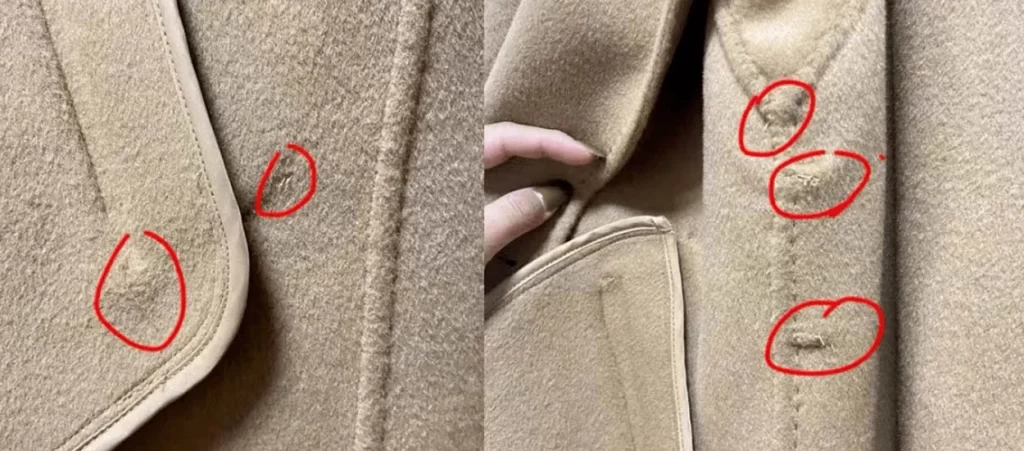
1. Setting Quality Standards
Clearly communicate your quality expectations to the supplier during negotiations to avoid any misunderstandings.
2. Inspection and Testing of Products
Regular inspections during production or before shipment are essential to verify product quality and compliance with specifications. Additionally, consider third-party testing to ensure compliance with safety standards.
3. Addressing Quality Issues
Promptly address any quality issues by establishing clear communication channels with the supplier. Collaborate to find solutions that meet your standards and maintain a good relationship.
4. The Role of China Sourcing Agent
Owlsourcing’s manager, Andy, offers the following advice:
“As the Owlsourcing service manager, Andy emphasizes the significance of quality assurance when sourcing clothes and fabrics from China. He underscores the importance of due diligence and vetting suppliers to ensure that the products meet international quality standards. Andy believes that while China offers a vast array of clothing and fabric options, the key lies in establishing strong supplier relationships built on trust, communication, and stringent quality control measures. By prioritizing these factors, businesses can indeed access good-quality clothes and fabrics from China and tap into the country’s manufacturing expertise effectively.”
Shipping Goods from China to Your Location
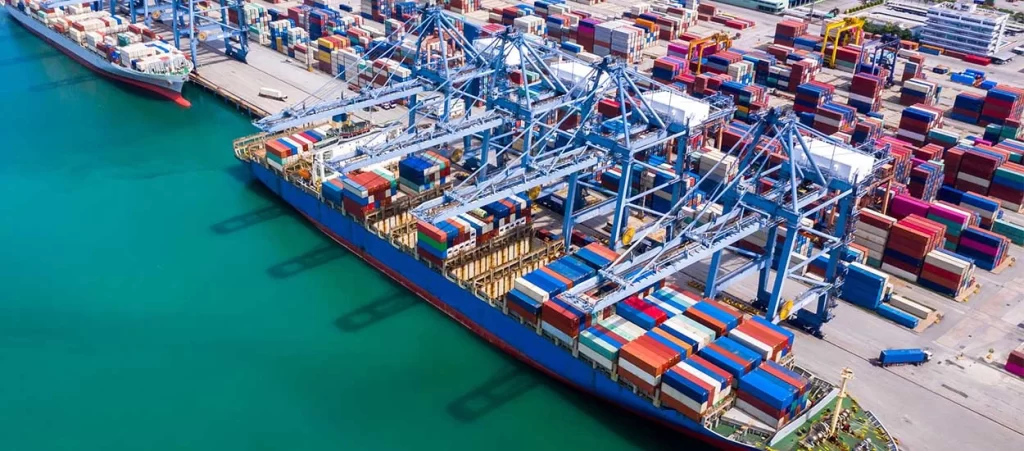
1. Choosing the Right Shipping Method
Selecting the appropriate shipping method is crucial when importing clothing and textiles from China. Factors to consider include speed, cost, reliability, and the type of goods being transported. Options range from air freight to sea freight, and even courier services like DHL or FedEx.
2. Navigating Customs Procedures
Understanding required documents, tariff classifications, duties, taxes, and any applicable regulations is crucial for smooth passage through customs checkpoints. Prepare all necessary documents well in advance.
3. Cost-Effective Shipping Solutions
Transportation costs can significantly impact your overall expenses when importing clothing from China. Therefore, finding cost-effective shipping solutions is crucial for maintaining profitability. Sometimes, exploring various strategies to reduce shipping costs without compromising quality or delivery times is necessary.
4. Minimum Order Quantity (MOQ) for Importing Clothing from China
One of the most common concerns for importers is the Minimum Order Quantity (MOQ) required by Chinese suppliers. MOQs can vary widely depending on the product, supplier, and manufacturing capacity. To address this concern, consider the following methods:
- Negotiation: Negotiate with the supplier to see if a more reasonable MOQ can be agreed upon. Sometimes, suppliers are willing to lower the MOQ under certain circumstances.
- Finding Suitable Suppliers: Different suppliers may have different MOQs, so you may need to search for suppliers that meet your requirements.
- Phased Purchasing: Consider breaking large orders into multiple phased purchases to reduce the initial purchase volume.
- Collaboration with Other Importers: If you find the MOQ too high, consider collaborating with other importers to share orders and meet the supplier’s requirements.
- Custom Production: Some suppliers may be willing to offer custom production with lower MOQs tailored to your needs.
Establishing Strong Relationships with Clothing and Fabric Suppliers in China

Building solid relationships with clothing and fabric suppliers in China is essential for successful import businesses. Here are some key steps:
1. Effective Communication
Communication is the cornerstone of any successful partnership. When working with Chinese suppliers, clear and effective communication is crucial. This includes providing detailed specifications for the desired products, discussing price negotiations, promptly addressing any issues or questions, and maintaining open communication channels throughout the process.
2. Building Trust and Long-Term Partnerships
Trust is crucial when dealing with international suppliers. Building trust takes time but is essential for long-term success. Regularly visiting your suppliers in person can foster closer relationships by demonstrating a commitment to the partnership.
Additionally, conducting thorough due diligence before signing contracts can help mitigate risks.
3. The Role of Sourcing Agents, Such as Owlsourcing
Sourcing agents play a crucial role in establishing strong relationships with Chinese suppliers. They act as intermediaries between buyers and manufacturers, ensuring smooth communication, quality control checks, order management, and problem resolution during the import process. Choosing to work with reliable sourcing agents like Owlsourcing can streamline operations and provide valuable support in handling cultural differences, ultimately enhancing your sourcing experience.
Understanding Chinese Culture and Language When Purchasing Clothing and Fabrics from China
1. Chinese Culture
Chinese culture is deeply rooted in tradition, customs, and practices. Familiarize yourself with cultural nuances to avoid unintended misunderstandings or offense. Respecting hierarchy, building personal relationships (guanxi), and understanding the concept of “face” are crucial aspects of doing business in China.
2. Overcoming Language Barriers

Language barriers can be a challenge when working with Chinese suppliers. While many suppliers have English-speaking staff, proficiency levels may vary. Take the time to learn basic Mandarin phrases or consider hiring a translator to facilitate communication. Translation tools can also facilitate smoother interactions.
3. The Role of Sourcing Agent
Sourcing agents with in-depth knowledge of Chinese culture and fluency in both languages can bridge the cultural and language gaps between buyers and suppliers. Their expertise ensures effective communication, negotiation, and understanding throughout the import process.
Consider Eco-Friendliness When Importing Clothing and Fabrics from China
In an era where sustainability is of paramount importance, it is essential to prioritize eco-friendliness when importing clothing and fabrics from China. Consider the following factors:
Environmental Considerations

Evaluate your suppliers’ environmental practices, such as waste management systems, energy consumption, and adherence to eco-friendly production technologies. Choosing manufacturers that prioritize sustainability can align your brand with responsible procurement practices and attract environmentally-conscious consumers.
An increasing number of Chinese clothing and fabric manufacturers are adopting sustainable materials, such as organic cotton, biodegradable fibers, regenerated fibers (like recycled polyester), and eco-friendly dyes and prints. This helps reduce reliance on finite resources and lower environmental impacts.
Ethical Sourcing and Manufacturing
Ensure that your suppliers adhere to ethical labor practices through thorough audits or by requiring certifications like BSCI (Business Social Compliance Initiative). This includes paying fair wages to workers, providing safe working conditions, prohibiting child labor exploitation, and complying with international labor standards.
Managing Risks in the Clothing and Fabric Business in China
1. Branding Your Imported Products
In a competitive market, branding plays a crucial role in setting your imported products apart from competitors. Establishing a strong brand image allows you to earn customer trust and create a loyal customer base.
2. Effective Marketing Strategies
Planned marketing can help businesses better understand the market and customer demands, reduce market risks, and respond effectively to market fluctuations.
3. Risk Management
Identifying and Mitigating Risks:
Before engaging potential suppliers, verify their qualifications, reputation, and compliance with ethical standards. Conduct due diligence, and understand legal requirements, import regulations, and tariffs.
Dealing with Unexpected Challenges:
Develop contingency plans to address unforeseen challenges, such as supply chain disruptions or political instability. Diversify your supplier base and maintain open communication channels.
Profiting from Chinese Clothing and Fabric

Calculate Profit Margins: Understand Costs and Pricing:
- Product Costs: Negotiate favorable prices with suppliers while ensuring quality meets requirements.
- Transportation and Logistics Costs: Include shipping, tariffs, taxes, insurance, warehousing, and delivery expenses.
- Marketing and Distribution Costs: Consider advertising, packaging, branding, website maintenance (if applicable), and distribution expenses.
- Overhead Costs: Cover rent, utilities, wages, software subscriptions, office supplies, and administrative expenses.
Maximize Return on Investment (ROI)
Build Strong Supplier Relationships: Maintain open communication, visit facilities, and set clear expectations to build trust and ensure quality control. Good relationships can lead to favorable pricing and production prioritization.
- Thoroughly Vet Suppliers: Verify qualifications, certifications, and reputation. Request samples and references to assess quality.
- Ensure Adherence to Quality Standards: Establish clear quality standards and implement stringent quality control measures throughout the production process.
- Understand Trade Regulations: Stay updated on customs tariffs, labeling requirements, intellectual property rights, safety standards, and trade agreements.
- Diversify Sourcing Channels: Explore alternative sourcing options in countries like India, Bangladesh, Vietnam, or Turkey.
By understanding profit margins, maximizing ROI, and employing effective strategies, you can successfully enter this vast market. Remember to conduct thorough research, build solid partnerships, prioritize quality control, stay informed about trade regulations, and explore diversified sourcing options. With careful planning and execution, importing clothing and textiles from China can be a profitable venture that takes your business to new heights.
Read More:
- Import Tariffs from China to US: How much I have to Pay for the US Import Customs Duty?
- What is a Sourcing Agent
- The Best Methods to Ship Your Product Directly from China
- How To Import Bags From China: A Detailed Guide
Summing up
In conclusion, importing clothing and textiles from China can be a sustainable business opportunity. Finding reliable suppliers, establishing clear communication and expectations with them, and maintaining robust quality control processes are essential for ensuring the success of your imports. Keep in mind that production lead times can vary significantly depending on product types, order volumes, and other factors, so it’s crucial to factor them into your planning. Of course, you can also address many issues by working with sourcing agent like Owlsourcing.
FAQs (Frequently Asked Questions)
1. What are the main advantages of importing clothing and textiles from China?
The main advantages of importing clothing and textiles from China include low production costs, high profitability, production diversity, well-established supply chains, technological innovation, and a wide variety of product choices.
2. Are there specific regulations or certifications to consider when importing clothing?
When importing clothing, specific regulations and certification requirements need to be considered, including quality standards, textile composition and labeling, product safety, tariffs, intellectual property rights, safety testing, import licenses, and customs declaration requirements, among others.
3. How can I find reliable suppliers in China?
To find reliable suppliers in China, you can employ various methods to screen and ensure the reliability of suppliers. These methods include assessing reputation, attending trade shows, utilizing online platforms, conducting on-site inspections, performing background checks on suppliers, signing contracts, implementing quality control measures, understanding the culture, and building strong working relationships.
4. What is the typical delivery time for orders placed with manufacturers in China?
The typical delivery time for orders placed with manufacturers in China can vary depending on factors such as product type, order volume, seasonal demand, supplier capacity, raw material availability, and quality control. Generally, it falls within a range of several weeks to several months.

